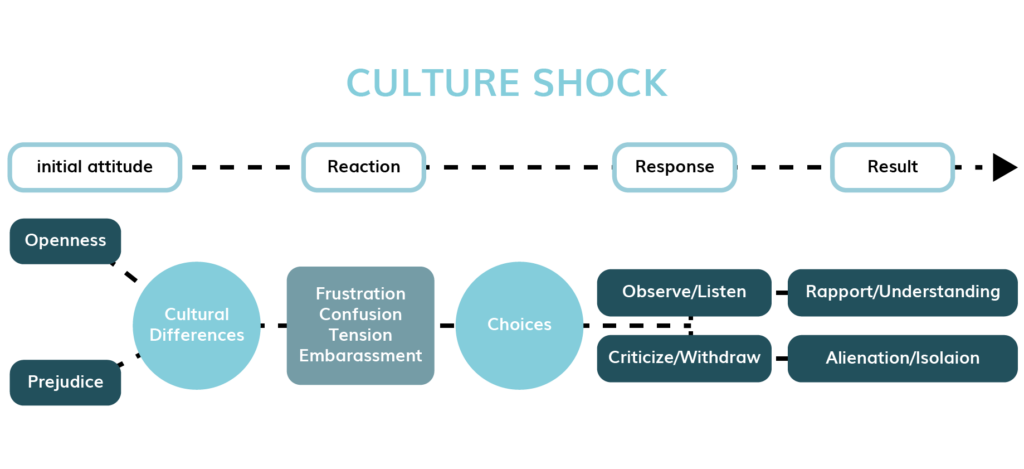The Difficulties of Intercultural Communication
Common Cross-cultural Communication Challenges
4 Common difficulties in intercultural communication
In the workplace, employees from various cultural backgrounds may perceive words, gestures, and other cues differently. This has implications for their interactions, choices, and attitudes toward conflict. Organizational diversity should foster global cooperation, with each individual giving their all. However, problems like misunderstandings, poor morale, and conflict may arise when personnel from different backgrounds are unable to effectively communicate with one another.
We tend to take communication for granted, but when we have problems, we tend to forget about them. Several of the issues that might cause an unengaged workforce will be discussed in this article.
"All communication is more or lace cross-cultural. We learn to use language as vie grow up, and growing up in different parts of the country, having different ethnic, religious, or dass backgrounds, even just being male or female - all result in olmerent nays on tolking"
(Debonah Tennan)
intercultural Communication issues 4 Common difficulties

Cultural values may clash when individuals from many cultural groups take on the exciting challenge of working together. We might misinterpret one another and respond in ways that hinder potentially promising collaborations. We are often unaware that culture is influencing us and that we have cultural beliefs or assumptions that vary from those of others.
- Direct versus indirect communication.
- Trouble with accents and fluency.
- Different attitudes toward hierarchy and authority.
- Conflicting norms for decision-making.
Direct Indirect
0%
Accent Fluency
0%
Hierarchy
0%
Decision Making
0%
Let’s investigate the 4 common difficulties in multicultural organization:

common difficulties 01 Direct vs. indirect communication
The communication styles used in Western cultures tend to be straightforward, and the meaning of what is said often seems to be obvious. When it comes to conveying their meaning, people of other cultures often choose a more subtle approach. Because of this, it is common for a non-Westerner and a Westerner to have a conversation in the workplace that ends up causing misunderstanding. This may take place both in face-to-face encounters as well as online through virtual means of communication.
It goes without saying that one of the most important factors in defining the cohesion of a business is how individuals from different cultures interact with one another. For instance, in a Western culture, the question would be, “Which one of these two options, A or B, is more productive? In contrast, personnel in a non-Western culture may be expected to imply or suggest a specific solution without directly declaring it. When someone in a Western culture nods their head in response to a remark made at a board meeting, we have a tendency to assume that they agree with the statement being made. However, in some cultures, a nod does not always signify that both parties agree with one another; rather, it is just an acknowledgment.
Direct Communication
Direct communication occurs when the speaker expresses their actual intentions in a spoken message. Messages from direct people usually don’t have a deeper meaning. They want honest, straightforward answers. This way of talking is known to be more “task-oriented” because criticism is given more freely and taken less personally. Direct people don’t shy away from disagreements and are used to saying so. For them, the best thing to do is, to be honest.
Indirect Communication
Indirect communication is when people don’t say what they mean, but you can figure it out from the context or what they don’t say. Most indirect speakers don’t say something immediately if they think it might cause tension or conflict. They will find more complicated ways to answer so they don’t have to say “no.” For them, being polite and “saving face” (not hurting someone’s sense of self-worth) is more important than being honest. Since people try to avoid direct conflict at all costs, indirect speakers will show disapproval or discomfort by not speaking, asking vague questions, or even complaining to a third party.
How to Handle Both Direct and Indirect Conflicts
As you may have figured out by now, these differences can cause problems if people don’t know how to communicate with each other or if they take it for granted.
How can we avoid or solve these kinds of conflicts?
First, by realising that every style of communication has its advantages and disadvantages. Some of them have to do with how much control each side has over how the conflict turns out. In a direct confrontation, the results are likely to reflect the interests of the people involved rather than the interests of an organisation, group, or family they are a part of. Harmony and social balance should be brought back in order for indirect conflict to be over. When you look at these advantages and disadvantages, it becomes clear that each approach to doing something can learn a lot from the other.
People who are more comfortable with direct communication:
- If they annoy others by being too harsh, you may assist them to understand how the other side perceives them and recommend a more subtle communication approach
- Tell them to pay attention to things like eye contact and body language
People with a preference towards indirect communication:
- Reflect as closely as possible their communication style. Be more frank if you feel you cannot grasp what is happening
- Attempt to have them provide more context or background in their speech
- Give them time to get to know each other before getting to the main point
Signs of a culture based on direct communication:
- Most spoken language is clear and sometimes even blunt
- The use of non-verbal cues is limited to supplementing or emphasising the spoken information
- They care a lot about being themselves and being able to say what they want
- It’s more important to be honest than to try to “save face”
- Communication efficiency takes priority above fluency and style
- They don’t need as much context and background knowledge. Often, all they want is “the gist”
- Silence or hesitation is annoying and is often seen as a sign that someone isn’t paying attention
Signs of a culture based on indirect communication:
- It may be difficult to convey the whole meaning of a statement using spoken words alone
- Nonverbal language, such as eye contact, body language, and so on, is very important in figuring out what is being said
- Silence and hesitation can be used to communicate, and they are often a sign of respect
- People need more background and context information
- People put the needs and goals of the group ahead of their own
- People choose how to say something so that no one, including themselves, will “lose face”
- Tone and eloquence are valued.
common difficulties 02 Trouble with Accents and Fluency
The language barrier between workers, including their various accents and levels of proficiency, is one of the most evident challenges in an organizationally diverse workplace. Even though English is the international business language of choice, many people who do not speak English as their native language can have the experience of being underappreciated and unnoticed in the workplace. This is because they have difficulty communicating what they want to say in their non-native language. Employees who are fluent in one language but struggle to communicate effectively in a second language may find that their capacity to contribute to the team is limited, even though they may be subject matter experts. This may sometimes lead to feelings of frustration and conflicts with other people. They may become less engaged and engaged as team members, compromising the collaborative learning process as a whole. A company may suffer unfavourable effects and fail to realise an improvement in its return on investment.
It may be challenging to communicate with individuals from different regions of the world due to differences in vocabulary, grammar, idioms, slang, and dialects, but at least the person having trouble doing so is aware of their difficulties. Clinging to a single interpretation of a word or phrase in a foreign language, regardless of connotation or context, is a more severe language issue. Misunderstandings may arise from even the most basic of terms. In certain cultures, it is polite to decline the first or second offer of refreshment, and many sojourners have gone to bed hungry because they never received the third offer. By acknowledging and discussing these distinctions, we can lessen the likelihood of encountering any awkward confusion. It’s helpful to talk about the subtle details in meaning and to adapt to the other person’s preferred mode of communication.
When talking to someone who speaks a different language or has a foreign accent than you, don’t use slang and try to speak clearly. Slow down and think about what you say. Ask questions about anything you don’t understand, and ensure the other person understands everything before you end the conversation.
Cultures also have different ways of giving and understanding information without words (non-verbal). For example, people in some cultures may have different ideas about personal space than people in North America, who tend to stay as far away from each other as possible. For example, if you get on an empty bus or subway car and the next person who gets on sits right next to you, you might feel uncomfortable, suspicious, or even afraid. This example might be a usual way to act in another part of the world. So, when people from different cultures with different ideas about space visit North America, they might not understand why people are trying to get away so far. For example, they might stand closer to other people or feel fine in big groups.
common difficulties 03 Different Attitudes toward Hierarchy and Authority
Teamwork is essential to the success and profitability of any business. But in some cultures, employees get different treatment based on their position in the company. In diversity training at work, it’s essential to look at how people from different cultures negotiate. For example, employees from different cultures have different ways of telling the manager or CEO about an idea. In some companies, employees have to make presentations to higher-level team members and take a step up the corporate ladder before they reach the executive level. Other organisations have relatively flat hierarchical structures where employees and leaders work together as a single team. A lack of cultural awareness can lead to a workforce that doesn’t work well together, and some employees may feel left out and unnoticed.

common difficulties 04 Conflicting Norms for Decision-Making
It shouldn’t come as a surprise that different cultures have their own distinct ways of obtaining agreements and making important decisions. The length of time it takes to make a choice, the procedures that must be followed first, and the amount of work that must be put in varies greatly from culture to culture. For instance, Americans tend to make decisions quickly, while people in other cultures tend to keep information to themselves until they have analysed and compared it.
Through training on diversity, successful businesses foster a culture of consciousness among their staff members, which drives them to appreciate one another. This kind of mutual understanding between managers and workers stimulates fresh ideas, diverse viewpoints, and cooperation inside a business, ultimately making all the difference.

intercultural Communication issues compare & contrast
How can you get ready to work with people who don’t share your culture? Do your homework to start. Let’s say a group of your Japanese coworkers is coming to your office next week. How could you get ready for them to come over? If you don’t know much about the history and culture of Japan, now is an excellent time to read or do some online research. If you can find some newspapers or magazines from Japan written in English, you can read through them to learn about current events and get a feel for how people write there.
Getting ready in this way will help you avoid talking about sensitive topics and show your guests that you know how to act. For example, the Japanese value modesty, politeness, and being on time. Knowing this, you can ensure you are on time for appointments and don’t talk too much about yourself and your accomplishments. It would help if you also learned what social mistakes to avoid. For instance, pouring their drinks is expected when you’re with Japanese people (another person at the table will run yours). Also, don’t put your chopsticks in a bowl of rice in a vertical position; this is considered rude. If you have never used chopsticks before, it would be nice to learn if you plan to eat Japanese food with your coworkers. In the same way, learning a few words of the language (like hello, nice to meet you, thank you, and goodbye) will show your guests that you are interested in their culture and willing to make an effort to communicate.
If you have a coworker who has been to Japan or who has worked with Japanese coworkers before, ask them what it was like so you can get ready. What should you try not to do? How should you talk to your coworkers and greet them? When the time comes, you’ll feel more sure of yourself if you know the answers to these questions. But remember, most of all, that a little bit goes a long way. Your guests will appreciate your efforts to make them feel welcome and at home. Most people are kind and understanding, so don’t worry too much if you make mistakes. Most people want to share their culture with others, so your guests will be happy to tell you about the different things they do.
You might have to travel internationally depending on what you do for a living. Culture shock can happen when you go to a country that is different from your own. According to OxfordDictionaries.com (2015), culture shock is “the feeling of disorientation someone has when they are suddenly exposed to a culture, way of life, or set of attitudes they are not used to.” It can make us feel lost and uncertain in a culture we are not familiar with. Have you ever been to a new country and thought you couldn’t absorb all the sensory information? Culture shock is expected since there are new sights, sounds, and smells, a new language and an unfamiliar place. To avoid this, it helps to learn as much as you can about the unique culture before you go. Learn some of the language and customs, watch media from that culture to get to know it, and do everything you can to prepare. But don’t hold the information you get too close to your chest. If you do this, you risk going in with preconceived ideas. As the figure below shows, if you go into a situation with an open mind and choose to respond to problems by actively listening and observing without judging, you’re more likely to build trust, understand, and have good things happen over time.


Scanxiety – Phases, Symptoms, and Coping with it

Reaching new levels of relaxation using guided imagery – for stress and anxiety

The Emotion Wheel: Everything to know

Coping with lung cancer

Deeper insight into what cancer patients feel
